Levee Safety Toolbox

RESOURCES FOR YOU
USACE Levee Safety Program
More than 13 million people live or work behind levees in the U.S. Army Corps of
Engineers’ (USACE) Levee Safety Program.
USACE partners with levee sponsors to manage more than 1,600 levees across the U.S. that
help reduce flood risk to people, businesses, critical infrastructure, and the environment.
The USACE Levee Safety Program serves as an organizing framework to improve consistency
and coordination in how levee-related activities are implemented across USACE. These activities are intended
to inform the community and support defendable levee decisions.
This toolbox is intended to help decision makers, community members, and levee
sponsors better understand levee design, construction, operation and maintenance, and preparedness.
Levee Safety Resources
These resources are provided by the USACE Levee Safety Program.
Flood Risk Resources
These resources are provided by the Federal Emergency Management Agency (FEMA).
FAQs
What is the Levee Safety Toolbox?
The Levee Safety Toolbox is a resource designed to support USACE staff, public sponsors for
congressionally-authorized levees, and the public access guidance, tools, and resources related to the
USACE Levee Safety Program. Currently, the toolbox only includes a public
interface and links to relevant guidance, tools, and training to support those working on USACE Levee
Safety Program levee activities day-to-day. A USACE-only portion of the toolbox is planned to be
released later in 2024.
Why was the Levee Safety Toolbox developed?
The toolbox was developed to provide a one-stop-shop for USACE
Levee Safety Program guidance, tools, and resources.
The toolbox provides links to current policies and information and tools related to levee-related
activities.
In addition, the toolbox consolidates links to related topics such as Federal Emergency Management Agency (FEMA)
resources for communities near levees, and guidance and materials for the
Public Law 84-99 Rehabilitation and Section 408 programs.
Who is the Levee Safety Toolbox intended to support?
This toolbox is designed to support USACE staff, public sponsors for congressionally authorized
levees,
and members of the public with an interest in infrastructure, levee-related practices, and flood risk
management.
How does the Levee Safety Toolbox relate to other existing sites?
The toolbox helps direct users to current policy, relevant tools, and similar information.
It is most helpful for those working on USACE
Levee Safety Program activities, such as levee design, inspections, risk assessments, or
planning for communication.
I’m a member of the public, where can I learn more about the USACE
Levee Safety Program?
If you want to read more information about the USACE
Levee Safety Program and how it fits within the USACE civil works mission, please visit our
public facing webpage, https://www.usace.army.mil/Missions/Civil-Works/Levee-Safety-Program/. This
webpage is also used to facilitate engagement on draft policies prior to them being final. Have more
questions or want to talk more about USACE’s Levee Safety Program?
Email us at hqleveesafety@usace.army.mil.
I work for USACE, where can I learn more about the USACE Levee Safety
Program?
There are several resources you may find helpful.
The USACE Levee Safety Program Knowledge Management Portal provides an overview of the program and key
points of contact at the headquarters and regional offices (https://usace.dps.mil/sites/KMP-LS).
In late 2024, the toolbox will also include an internal only page that will include templates such as
for program management plans.
Risk Assessments
USACE performs risk assessments on levees to evaluate and understand the
flood risk and to determine the level of risk that the levees pose to surrounding areas. Risk assessments
help to identify vulnerabilities and weaknesses in levee systems, assess the likelihood of levee failure
during flood events, and estimate the potential consequences and impacts of such failures.Risk assessments enable USACE and stakeholders to proactively manage and
address potential flood risks and guide decision makers in making informed choices about levee
infrastructure and flood management strategies. The assessments also contribute to informed decision-making
processes regarding levee accreditation for the National Flood Insurance Program, which ensures that the
public is adequately protected and insured against flood damages.
Risk Assessment Resources
Inspections
Flood risk and the levee conditions can change over time. Levee banks can erode,
closures rust, animals dig tunnels, and pumps wear out. To ensure that levees work properly during a flood,
constant watchfulness is necessary.USACE regularly inspects levees as part
of its Levee Safety Program. These inspections help monitor the overall condition of the levees, find
problems or weaknesses, make sure necessary maintenance work is being performed, determine if the levee
qualifies for federal assistance for repairs (Public Law (P.L) 84-99 Rehabilitation Program), and provide
information to the public who rely on these levees.The inspection information is also used to assess the
risk of flooding.
Levee Inspection Resources
Planning
The Levee Safety Program integrates knowledge and expertise from other USACE
business lines including planning, programs, real estate, and engineering and construction, among others.
Design & Construction
A risk-informed approach will be used for all dam and levee designs
for new projects, modifications, improvements, rehabilitation, or repairs. Risk assessments are the
cornerstone for application of a risk-informed decision making approach.
Operations & Maintenance
Regular operations and maintenance are crucial for the usefulness
and lifespan of levees and floodwalls. By practicing good operations and maintenance, communities can
enhance the reliability of levees and floodwalls, which can reduce the risk of flooding.
Operations & Maintenance Resources
Emergency Planning & Response
Advanced planning for levee-related flood emergencies can help those involved
know their role and what can be done to minimize loss of life and damage to property.
Levee Sponsors
Local sponsors are valued partners with USACE. Together we strive to reduce
the levee risks associated with flooding through risk-informed levee management.
Levee Sponsor Resources
Flood Resources for Sponsors
